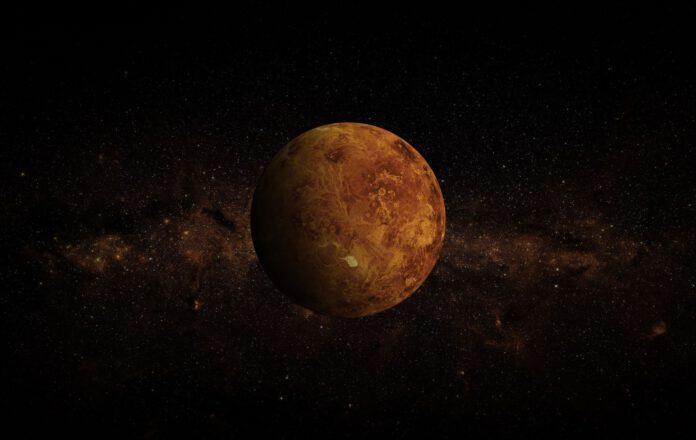
Evidence of Atomic Oxygen Discovered on Venus
Astronomers have uncovered direct evidence of atomic oxygen hovering above the toxic clouds of our sibling planet, Venus.
Earth’s Sibling
In our solar system, we find two noticeably similar planets: Earth and Venus. Likely of the same age and comprised of the same building blocks, the two have comparable sizes, yet the contrasts are significant. Earth features a bright, blue sky and a oxygen-rich atmosphere, while Venus is surrounded by a thick cloud of carbon dioxide, nitrogen and various trace gases. Despite the hostile environment, even within our ‘evil’ twin’s tumultuous atmosphere, oxygen exists, as researchers now prove.
A Different Form of Oxygen
For clarification, the type of oxygen on Venus is different from the kind we have on Earth. Venus is home to atomic oxygen. “Atomic oxygen consists of only one oxygen atom,” explains researcher Heinz-Wilhelm Hübers. “This is different from molecular oxygen, which consists of two oxygen atoms and is essential for us to breathe.”
The Discovery
Researchers came across this atomic oxygen using the Terahertz-spectrometer upGREAT onboard SOFIA. Upon analysis of their findings, they detected clear signs of atomic oxygen on both the day and night sides of the planet.
Day and Night Side
Hence, atomic oxygen is found on both sides, and this has now been measured directly for the first time. Despite us knowing that atomic oxygen plays a key role in the photochemistry and energy balance of the atmosphere of Venus, it had never previously been recorded directly on the day side of Venus. Prior observations were limited to studying the weak airglow of Venus, a subtle emission of light by the atmosphere of the planet.
Understanding Oxygen Creation
So, how is atomic oxygen on Venus actually created? This form of oxygen is produced on the day side of Venus by the breakdown of carbon dioxide (CO2) and carbon monoxide (CO), and is then transported to the night side. “The atomic oxygen is formed through photolysis,” explains Hübers. “Solar radiation breaks down CO2 molecules, and the oxygen from these CO2 molecules is released as atomic oxygen.” The team examined 17 points on both sides of the planet and found oxygen detected at all locations, with the highest concentrations approximately 100 kilometers above the surface.
Insights and Future Research
This discovery contributes to a deeper understanding of the photochemistry of the Venusian atmosphere and could pave the way for a better understanding of how Venus and Earth, despite their strong similarities, have pursued such different paths. Furthermore, the hope is also placed on several upcoming space missions to Venus. These hold promise to be exciting and insightful missions, eventually painting a global picture of our sister planet and characterizing it from top to bottom. As a result, we are likely to learn much more about the still enigmatic planet Venus.











